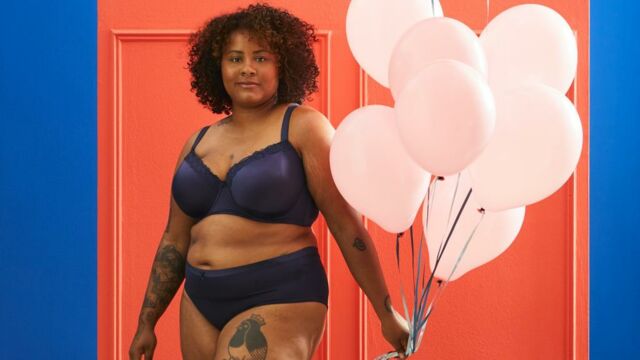The idea of accepting your own body for the way that it looks might sound like a very daunting prospect for many. In fact, it seems as though the world makes it its day-job to instill fear in us at the sight of our own reflection. Women, men and girls and boys alike are incessantly bombarded with images of perfect bodies through the media we consume on the daily.
Discover our latest podcast
As a counter movement to body-shaming, social media has been a catalyst in modern times to what is now known as body positivity. Influencers, celebrities and even some brands looking to reinvent their marketing strategies are proponents of this self-accepting movement in the name of inclusivity.
What is Body Positivity?
In a nutshell, body positivity is the belief that all bodies, regardless of what society or pop culture might want us to believe, should be accepted, celebrated and loved. The aim of this movement is to dismantle beauty standards that, in actuality, only exclude those who do not fit unrealistic ideals that are ultimately conducive to varying degrees of psychological turmoil.

By challenging these exclusionary ideals on how one’s body should look like, the body positivity movement allows room for one to foster confidence, self-esteem and self-acceptance. Body positivity not only addresses and deconstructs the issue of media-induced self-loathing, but it also equips one with the tools necessary to develop a healthy relationship with one’s own body regardless of what it looks like.
Brief history
Although the last decade has seen a considerable boom in popularity through the advocacy from public figures on social media platforms, body positivity is rooted in first wave feminism as seen in the mid to late 1800s with the Victorian Dress Reform Movement. The woman involved in this social uprising aimed to end the heavily imposed trend to modify their bodies in order to be able to fit in corsets and tight lacing as was the norm at the time.
Fast-forward to almost a century later, and a second important advancement in body positivity came about with the appearance of the fat acceptance movement that came to prominence in the late 60s. With The National Association to Advance Fat Acceptance emerging in 1969, the conversation surrounding fat-shaming culture started to gain traction, but not enough to generate a significant cultural shift in the way society perceived the body.
The term in and of itself later came to be in 1996 when a psychotherapist, who themselves struggled with eating disorders, founded the website thebodypositive.org. The purpose of the website was to provide people with resources and educational material compiled in an effort to help those suffering with body dysmorphia.
Where are we now?
In its current form, body positivity took centre stage in 2012 as a way to challenge mass consumerism and capitalism that was being promoted by the fashion, beauty and entertainment industries. Social stances against fat shaming came to the forefront on social media with digital movements such as #EffYourBeautyStandards, HonorMyCurves and #CelebrateMySize.

The movement has evolved to tackle different issues concerning the body’s perception by society. On top of shape, size and weight, conversations regarding hair texture, skin diseases and anomalies and even race are included within discussions revolving around body positivity.
Advertising campaigns for beauty and fashion brands have been seen to have dramatically reduced their heavy reliance on photoshop. Make-up brands, such as Rihanna’s Fenty Beauty for example, caters to more skin tones and only uses models that stray away from conventional beauty standards for their advertisements.
Key Figures
In 2013, model and feminist advocate Tess Holliday created the instagram account @EffYourBeautyStandards as a way to provide a community for those who felt excluded for the way they looked. Since, the body positivity movement has gained worldwide recognition.

With the help from celebrities such as Lizzo, Rihanna, Serena Williams, Ashley Graham and others, body positivity has had an important impact on popular culture’s relationship with beauty standards. In January of 2021, British-born model, Paloma Elsesser, became the first curvy model to appear on a solo cover of American Vogue–largely considered to be the most important fashion magazine in the world.

How to practice body positivity?
Some things to consider when embarking on the journey of self-acceptance is to be mindful of positive affirmations and how to use them effectively. Some research shows that people with low-self esteem who do not truly believe in the positive reinforcement they are practising on themselves might actually only worsen their state of mind.
For this reason, before mindlessly repeating self-affirming mantras as a mask of resilience in the face of adversity, one must first come to terms with the following in order to truly harness the positive effects of body positivity:
- Practice self-compassion: Accepting your flaws and acknowledging imperfections without beating yourself up for it is the first step to loving yourself. As one of Nirvana’s hit singles so eloquently put it, simply come as you are.
- Incorporate health-focused self-care: In other words, you should exercise and eat healthy foods as purposes in and of themselves, as opposed to doing it merely as a means towards an end. To expand, if you decide to adopt new lifestyle changes such as clean eating and regular exercise, do so in order to fuel your mind and body instead of doing it solely to lose weight.
- Find a support system: Whether it’s close friends and family that will help you get through greyer days, or becoming a part of an online community, surrounding yourself with people that uplift you will only help you in realizing your self-worth, acceptance and love.















